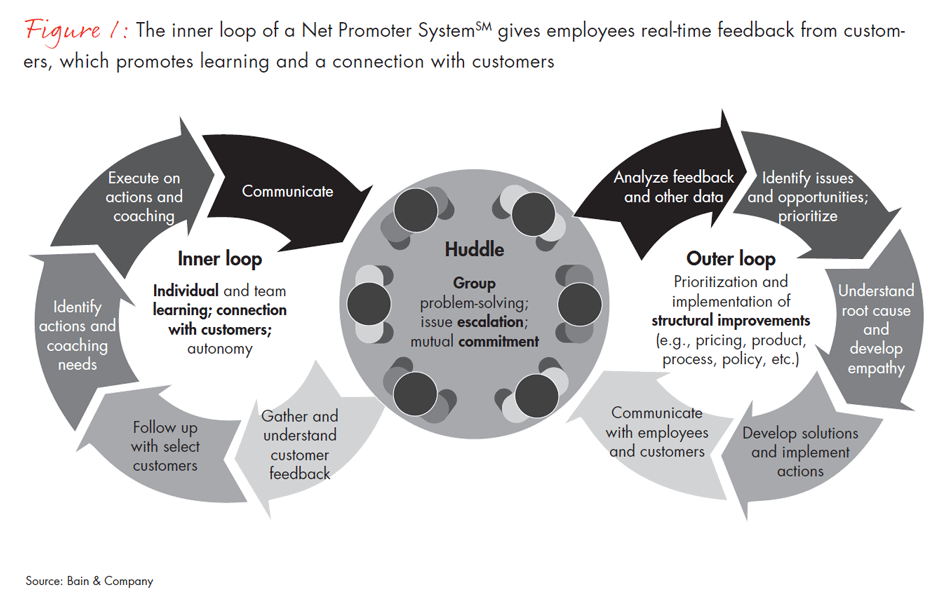B2B Customer Surveys 101

Last updated on October 1, 2022
B2B companies often struggle with common hurdles when it comes to surveying customers. Conducting B2B customer surveys should be an illuminating process, but instead, they become a nightmare that makes you want to tear your hair out. It’s kind of like making New Year’s resolutions… you know you should stick to them, but somehow you always stray from the righteous path.
It shouldn’t be this way.
There are a few major problems that B2B surveys often experience – on the one hand, you may struggle to collect enough responses to your surveys, raising problems with sample sizes and statistical validation. This means you don’t have enough actionable data to improve your Customer Experience (CX).
On the other hand, maybe customers are sharing their thoughts and feelings with you, but you don’t know how to act on it! You’re overwhelmed with a flood of amorphous feedback that leads you nowhere fast.
Neither situation is good. Fortunately, the problem is frequently one of process, and CX tools that don’t allow you to be flexible, adaptable, and agile. This process is important – and very much possible – to get right – that’s why more than half of customers globally expect businesses to take action on their feedback. Businesses know this, but the problems persist.
Why Customer Surveys Fail 1: too little data, too seldom
The problems become really entrenched when you only conduct your surveys once or twice a year. With that route comes the tendency to ask all the important questions at once. Every team wants to get their share of feedback! Customer surveys stretch to several pages, reducing the likelihood that your customers will find time to complete them. They might give halfway through, or click random buttons to get to the end.
Surveys also just aren’t as effective if they’re not timely and relevant. Take the highly significant issue of customer churn. By the time you’ve analyzed your customer data in two months, or even longer, unhappy customers have either already churned, or are past the point of recovery. That’s an even bigger issue when you consider that 67% of customer churn is likely to be preventable if you resolve an issue the first time it occurs.
Why Customer Surveys Fail 2: not acting on feedback
Sometimes, asking for feedback and failing to provide a response can be more damaging than never reaching out in the first place. When your surveys are conducted on a small scale, it may be quite easy to identify customer trouble spots, and take action.
Then, as time goes on, it may seem like you’re winning when lots of customers are filling out your surveys. The big “but” is that someone needs to sort through that feedback and assign an action. Unfortunately, the bigger your company gets, the harder it is to cope with the volume of feedback. There’s just no time to analyze all that data manually. It becomes tempting to make wild guesses that just aren’t bringing ROI.
When companies don’t appear to listen to feedback, this damages the customer experience, and makes customers less likely to offer feedback in the future. That’s a lose-lose scenario for everyone.
Don’t worry, though. That’s where state-of-the-art CX platforms powered by AI come in.
Solving the Problems with B2B Surveys
Customer feedback needs to be addressed in two ways:
-
The individual customer’s feedback needs to be resolved and addressed.
-
The company needs to ensure the feedback is addressed systematically.
In CX strategy, this is called closing the inner loop and the outer loop.
Closing the inner Loop
The Net Promoter System® creates an Inner Loop within the company that is designed to connect customer feedback with the right person in the company.

Source: Bain & Company
The Inner Loop closes your customer feedback processes. The reason for using this model is that the person responsible for collecting data is rarely the best person to reply to (or act on) the feedback. Engineers ship software to customers, for example, but they might hardly ever come into contact with the end-user.
If the marketing team or the Voice of Customer team is running a survey, they might get responses that are looking for technical help, disappointed about the sales process, or suggesting a new product feature. How do you ensure the customer is connected to the person or team who can take action on it?
You can make effective use of automation to streamline your customer feedback processes, as well as integrate all your important tools into one system. Build your feedback systems to facilitate the information flow to every part of your business.
Lumoa is a CX platform that can create automatic alerts that send notifications to the right people when a specific criterion is met. This is what we mean by closing the Inner Loop.

For example, you might send out an NPS® survey to your customers. The results are rolling in, and you receive some negative feedback – say, a Detractor score of between 0–6. Along with the negative score, the Detractor has also explained that they are having trouble making some account changes. Lumoa will forward the response to your customer service team who can immediately respond, and hopefully save your customer!
Closing the Outer Loop
Now that you can be assured every customer has the best chance of receiving a timely and effective response, it’s time to interpret the overall feedback trends and analyze the data. This part of the process typically has to be more centralized, perhaps led by the Customer Advocacy Office (CAO).
The aim of this process is to match your company values with customer insights, making sure you’re staying on track overall. You need to check that what you’re striving for as a business is reflected in the experience that customers are having with your brand.
Data can tell you how well you’re succeeding in your mission by helping you assign a monetary value to particular initiatives. Being able to place a number on how well something is working allows you to gain more stakeholder support within the business, and make the case for more budget allowance by prioritizing initiatives more effectively. It’s money well spent furthering the goals of your organizations.
Text analysis is another way you can make sense of the reams of qualitative data you may collect through surveys like NPS® (Net Promoter Score) and CSAT (Customer Satisfaction). You will discover trends and insights you may never have thought to look for, and refine your strategies. “The more information you can learn about the customer, the better you can serve their needs, and the more valuable the relationship becomes,” says Tien Tzuo, co-founder of Zuora.
Designing a more worthwhile B2B survey
So we’ve already identified the two main problems: not sending enough surveys, and the possibility of drowning in data. You can turn these issues into opportunities by implementing the right CX platform and leveraging the powers of AI.
A better survey design and regularly sending out short surveys will help you gather more actionable feedback. Combining your surveys with a solid CX platform that collects and controls data solves problem one. Then, closing your inner and outer loops means you will be managing the volume effectively.
Lumoa brings all your customer feedback into one place, aggregating from sources like surveys, social media, chat, calls, customer support and app reviews. It no longer becomes segregated by channel, an approach that encourages siloed attitudes towards customers in general. You shouldn’t have a social media team and a survey team – you just place the focus squarely on the customer.
Avoid survey fatigue by regularly sending out short, standardized surveys that ask for a rating, and include an open-ended question for follow-up information. This is possible to do with both a CSAT survey (which you can send out after every support interaction) and an NPS® survey which you can send less regularly. Ensure your surveys are contextual and reach the customer through the same channel in which they have initiated contact with you.
For example, 72% of B2B businesses think a website that is simple to use is one of their most valuable selling points. If you want to gather feedback on your website design, make your survey appear on your site (in context) and ensure that it’s easy to fill in. Lumoa will still collect all your feedback, and it will appear within the centralized dashboard along with analysis based on AI.
Final remarks
Collecting customer feedback properly is essential in an era of rising customer service expectations. In the future, 89% of businesses are expecting to compete on Customer Experience alone, and for that to be successful, you need data – not intuitions and guesses. You may be right in theory, but the numbers are harder to ignore, and they win you stronger support internally.
When internal stakeholders see how easy it is to collect meaningful data and take action on it, they will become more and more motivated to make it a central part of every initiative. The more data you collect, the more relevant and effective your responses to customers will be.
